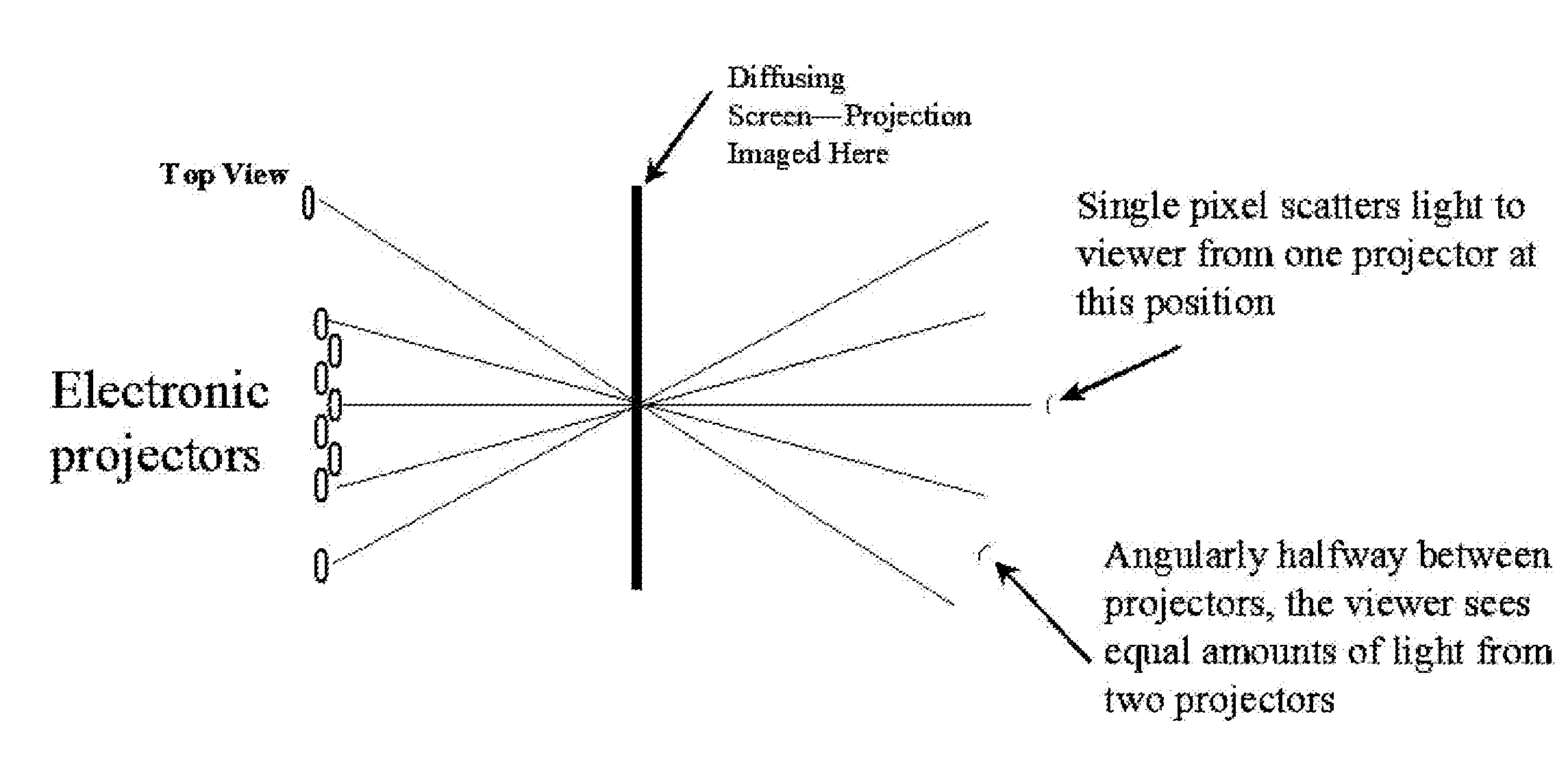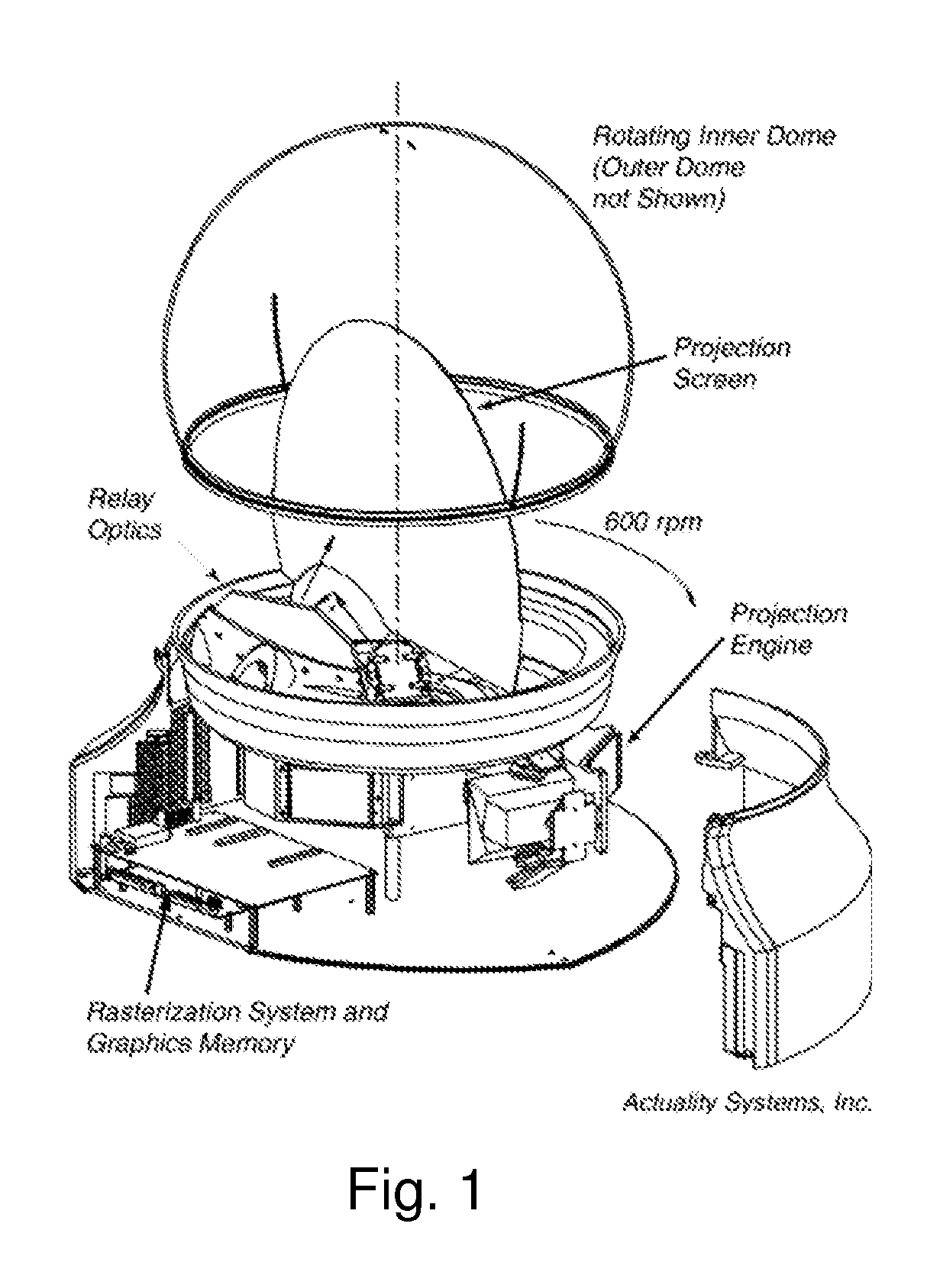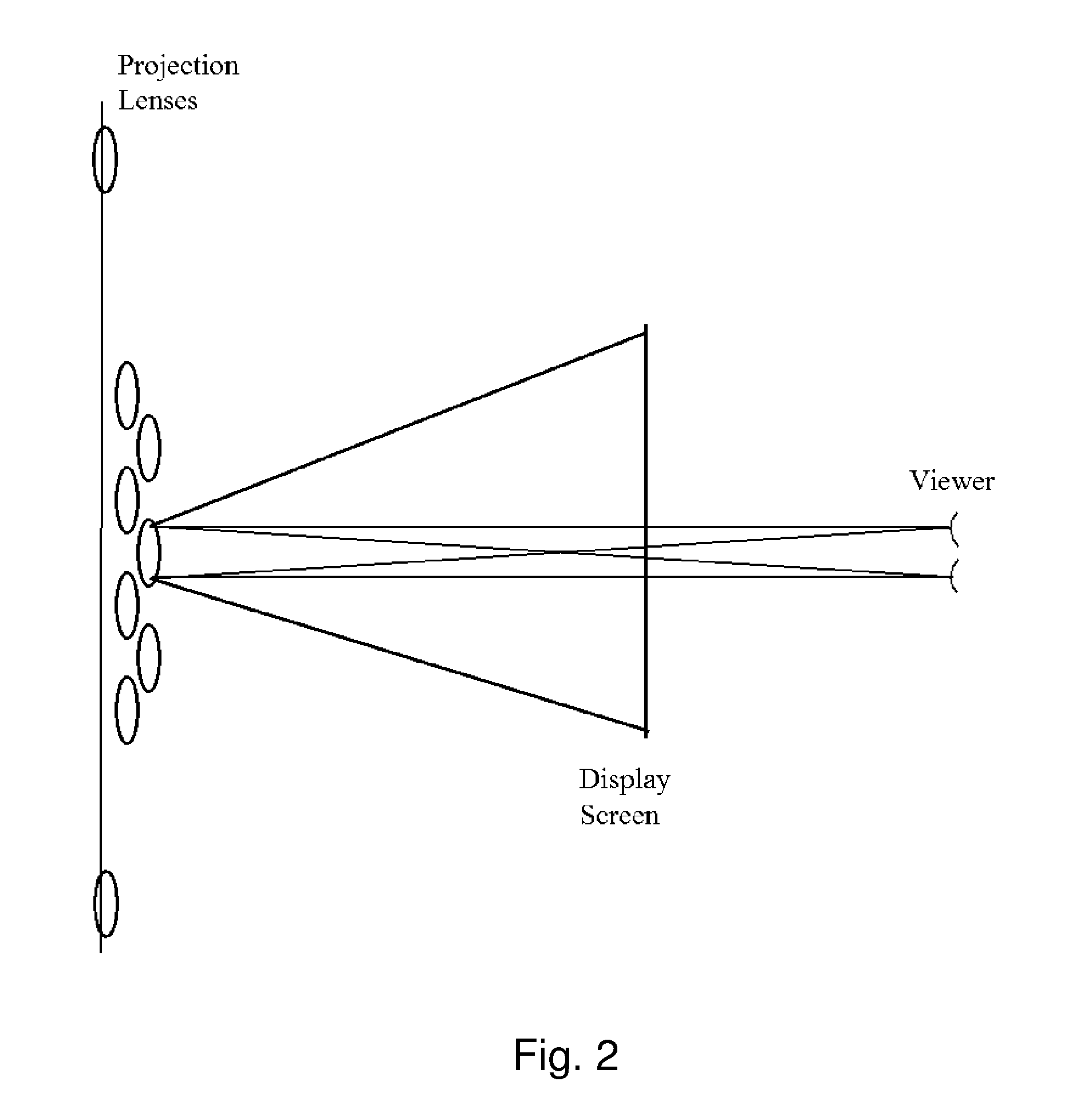System and Methods for Angular Slice True 3-D Display
a technology of angular slice and display, applied in the field of three-dimensional (3d) displays, can solve the problems of cumbersome use as projection display, system failure to produce a true 3-d perspective at the user's eye, cumbersome use, etc., to increase the resolution of the display, and increase the total fov of the display
- Summary
- Abstract
- Description
- Claims
- Application Information
AI Technical Summary
Benefits of technology
Problems solved by technology
Method used
Image
Examples
Embodiment Construction
[0033]The present invention and the various features and advantageous details thereof are explained more fully with reference to the nonlimiting embodiments that are illustrated in the accompanying drawings and detailed in the following description. Descriptions of well-known components and processing techniques are omitted so as to not unnecessarily obscure the present invention in detail.
System Overview
[0034]The present invention provides a true 3-D display. That is, when the observer moves her head to a new viewing angle, she sees something that was previously not visible, just as when an observer moves his head to the right in the real world, he can see things around a corner on his left that were not previously visible. Note immediately that for a normal 2D display this is not true—when the viewer moves her head, the scene remains the same—nothing new is visible. This is also true for dual-view stereoscopic and autostereoscopic displays—while a different view is provided for ea...
PUM
 Login to View More
Login to View More Abstract
Description
Claims
Application Information
 Login to View More
Login to View More - R&D
- Intellectual Property
- Life Sciences
- Materials
- Tech Scout
- Unparalleled Data Quality
- Higher Quality Content
- 60% Fewer Hallucinations
Browse by: Latest US Patents, China's latest patents, Technical Efficacy Thesaurus, Application Domain, Technology Topic, Popular Technical Reports.
© 2025 PatSnap. All rights reserved.Legal|Privacy policy|Modern Slavery Act Transparency Statement|Sitemap|About US| Contact US: help@patsnap.com



